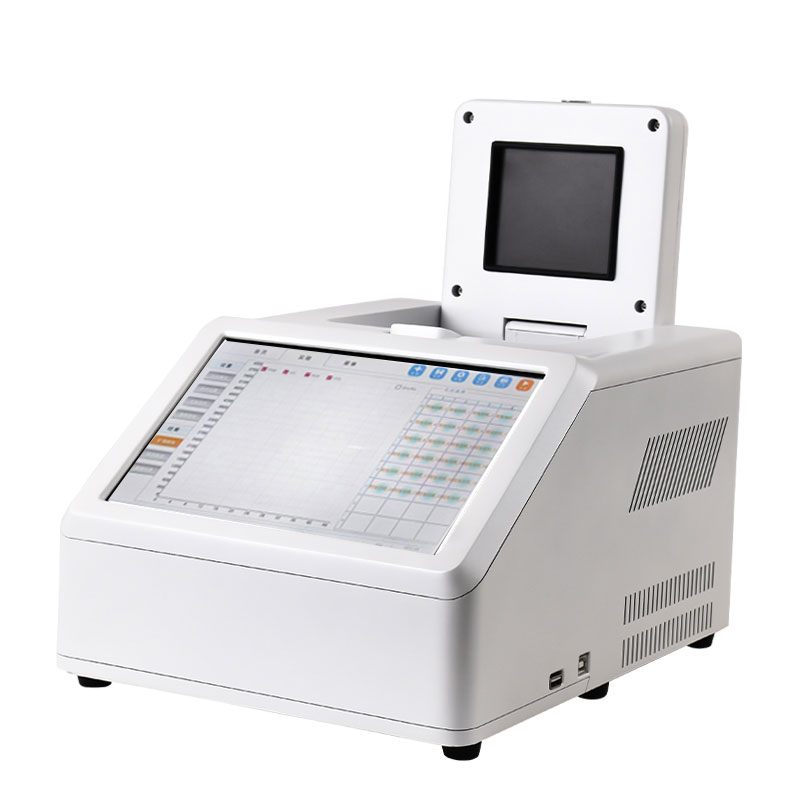Tianyi Sensor IOT Technology Co., Ltd
Sales Manager:Ms. Emily Wang
Cel,Whatsapp,Wechat:+86 15898932201
Email:info@fengtutec.com
Add:No. 155 Optoelectronic Industry Accelerator, Gaoxin District, Weifang, Shandong, China

Sales Manager:Ms. Emily Wang
Cel,Whatsapp,Wechat:+86 15898932201
Email:info@fengtutec.com
Add:No. 155 Optoelectronic Industry Accelerator, Gaoxin District, Weifang, Shandong, China

Model:FT-CW48H
Brand:tianyi
fluorescent quantitative PCR instrument basic structure
Fluorescent quantitative PCR instrument is widely used in pathogenic microorganism detection, tumor gene detection, new drug development, scientific research, and food hygiene.fluorescent quantitative PCR instrument is a real-time detection instrument, mainly composed of a gene amplification thermal circulation system, a fluorescence real-time detection system, a microcircuit control system, a computer and application software. Two of the core functional modules are: the thermal circulation system and the fluorescence real-time detection system. Among them, the working principle of the gene amplification thermal cycle system is basically the same as that of the traditional gene amplification instrument, and the thermal cycle process is completed by semiconductor heating and refrigeration. The fluorescence detection system mainly consists of fluorescence excitation components, optical signal transmission components, fluorescence detection components, and control systems.
fluorescent quantitative PCR instrument technical indicators
The "///" symbol indicates that the national standard currently does not define this indicator or mandatory requirement.
| Metric Name | CW16H | CW32H | CW48H | |
| Appearance | ||||
| External dimensions | 235mm*385mm*175mm (width*deep*height) | |||
| weight | 5.6kg | 5.7kg | 5.8Kg | |
| Electrical parameters | ~220V/50Hz, 255W | |||
| Data interface | USB 2.0 *2 (two on the right) | |||
| Environment parameters | ||||
| Running conditions | Temperature: 10-30℃, humidity: 20%~80% | |||
| Transportation and storage conditions | Temperature: -20~55℃, humidity: 20%~80% | |||
| Altitude | <2500 meters | |||
| Noise level | A weight, <60dB | |||
| Sample parameters | ||||
| Sample capacity | 16*0.2mL | 32*0.2mL | 48*0.2mL | |
| Test tube type | Single tube, eight-line test tube | |||
| Sample volume | 15-100uL | |||
| Temperature characteristics | ||||
| Heating/cooling method | Semiconductor heating/refrigeration | |||
| Temperature range | 4℃-99℃ | |||
| Maximum heating rate | ≥3.5℃/s | |||
| Average heating rate | ≥2.5℃/s | |||
| Maximum cooling rate | ≥3.5℃/s | |||
| Average cooling rate | ≥2.5℃/s | |||
| Temperature control accuracy | ≤±0.01℃ | |||
| Temperature accuracy | ≤±0.1℃ | |||
| Temperature uniformity | ≤±0.3℃ | |||
| Optical properties | ||||
| Number of fluorescence detection channels | 4 channels | |||
| Light emitting devices | High brightness LED | |||
| Lighting devices | High sensitivity, high signal-to-noise ratio photodiode | |||
| Adapt probe or dye | First channel: 470/520 FAM, SYBR Green | |||
| Second channel: 530/570 HEX, JOE, VIC | ||||
| Third channel: 580/610 ROX, CY3.5, Texas-Red | ||||
| Channel 4: 630/670 CY5 | ||||
| Detection sensitivity | 1 copy | |||
| Linear detection range | 100~1010 copies | |||
| Linear correlation coefficient | ≥0.999 | |||
| Channel cross-talk | No cross-talk | |||
| Detect repeatability | ≤1.0% | |||
fluorescent quantitative PCR instrument main application fields
Foodborne pathogenic bacteria detection
Food Safety
Animal and plant origin detection
Plant Science and Agricultural Biotechnology
Gene mutations and polymorphisms
Animal Blight
Basic scientific research
Water monitoring
Pathogen nucleic acid detection
Genetically modified test
Animal epidemic monitoring
Food hygiene quarantine
Customs import and export quarantine
Traditional air quality monitoring stations (national and provincial control points) use extremely sophisticated and expensive equipment, resulting in very high construction and operational costs. Consequently, a city typically has only a handful of such stations. Due to the limited number of statio...
In today's intertwined context of agricultural modernization and ecological conservation needs, dynamic changes in soil moisture directly impact crop growth, water resource utilization, and ecosystem stability. Automatic Soil Monitoring Systems are becoming the link connecting farmland managemen...
Every flood season, heavy rainfall occurs frequently, causing water levels in rivers and lakes to rise rapidly, and the risk of flood disasters increases significantly. During such a special period, the Radar Current Meter, as a professional hydrological monitoring device, becomes an important tool...
A miniature sensor is a highly integrated meteorological monitoring device. By integrating multiple miniaturized sensors and processing units, it can realize real-time monitoring and data collection of multiple meteorological elements. The device typically integrates core components such as temperat...